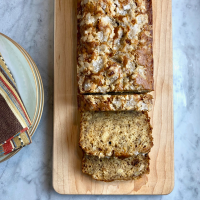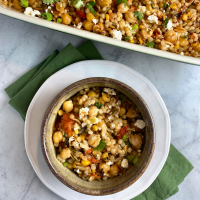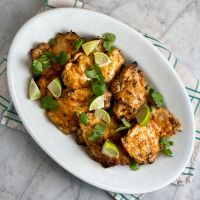
We enjoyed this delicious beer cheese before our St. Patrick’s Day shepherd’s pie and soda bread. Beer cheese is good. It may have been more Irish if I had incorporated an Irish beer but I used a Negra Modelo instead. 😉
This recipe was adapted from Bon Appétit, contributed by Amelia Rampe. I halved the recipe and modified the method and proportions. We used a small spreader to put the beer cheese on crackers and pretzels and dipped in celery and carrot sticks. Pita chips, water crackers, radishes, and/or cucumbers would also be great additions. It is very important that the dip is at room temperature prior to serving.
Yield: Serves 6
- 4 oz mild cheddar, coarsely grated, at room temperature (about 1 cup)
- 4 oz extra sharp cheddar, coarsely grated, room temperature (about 1 cup)
- 2 garlic cloves, finely grated or pushed through a garlic press
- 1 T Worcestershire sauce
- 1/2 tsp Colman’s mustard powder (I used dry mustard)
- 1/2 tsp hot sauce (I used Chipotle Cholula)
- pinch of cayenne pepper
- pinch of kosher salt
- 6 to 7 T (3 oz)(about 3/8 cup) flat brown ale, at room temperature (see Note)(I used Negra Modelo), or more, to adjust consistency
- finely chopped chives, for garnish
- assorted crudités, such as carrots, radishes, cucumbers and/or celery, cut into 3-inch pieces
- assorted crackers, such as Club crackers, saltines, rye crackers, and/or water crackers, for serving (I used pretzels too)
- Pulse grated cheese and garlic in a food processor until finely chopped.
- Add Worcestershire, mustard powder, hot sauce, cayenne, and salt and pulse until well combined (mixture will clump together).
- With motor running, slowly add beer and pulse until mixture is smooth but still grainy, about 2 minutes. (additional beer can be added to adjust the consistency)
- Transfer to a serving bowl and stir with a rubber spatula to combine.
- Top with chives.
- Serve with crudités and crackers.
Note: To bring the beer to room temperature faster and make it flat, you can whisk it on the stovetop over low heat or heat in a microwave in short increments, stirring in between. (I left the bottle open in the refrigerator overnight to make it flat. I brought it to room temperature on the counter with the cheeses.)
Do Ahead: Beer cheese can be made 2 days ahead; transfer to an airtight container and chill. Bring to room temperature before serving.



















